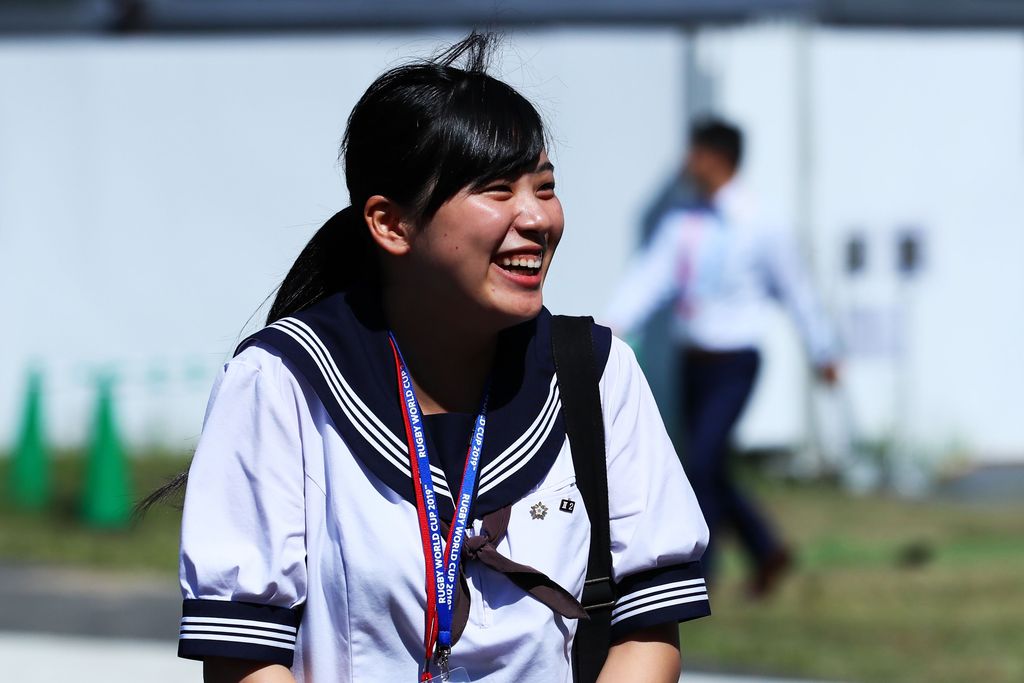KAMAISHI, 25 Sep - Life, and hope, has returned to Kamaishi after it was devastated by natural disaster - and rugby has been part of the region's remarkable recovery.
The match between Fiji and Uruguay at Kamaishi Recovery Memorial Stadium on Wednesday is a tangible sign of just how far Kamaishi has come in eight years.
In the aftermath of the Great East Japan Earthquake and tsunami that stole thousands of lives and left many of its survivors homeless, the region, like so many others in Japan’s northern prefectures, appeared to be in a state of complete disrepair.
The magnitude-9.1 earthquake that struck on the morning of 11 March, 2011 gave inhabitants in the port towns and cities on the Pacific coast little time to run to safety and led to an outpouring of support from around the world.
Before Wednesday's game, local woman Rui Horaguchi gave a passionate account of the tsunami that swept away her home - and her school, which once stood on the site where the new stadium has been built.
Eighteen-year-old Horaguchi, pictured, who also attended RWC 2015 in England, said she had seen the reality of what the tournament means for her community.
"My house was washed away in the waves and after that, I remember that we had donations from across the world," she told the media. "It is all of that support that has allowed us to look forward and, once it was decided that Kamaishi would host the Rugby World Cup, there was a huge increase in the construction of the city.
"That was when we began to understand why Kamaishi was chosen, to help grow the area again. This has really helped the community to come together and I am hopeful that we will maintain that unity to make it even better."
In the years since the disaster, rugby has represented a common thread throughout Kamaishi’s remarkable recovery. Its famous team, the Kamaishi Seawaves, who won seven consecutive national championships between 1979 and 1985, have also played an important part in the revival of the region.
Incredible fly past over Kamaishi courtesy of the Matsushima Air Base, which was damaged during the 2011 Tsunami. #FIJvURU #RWC2019 pic.twitter.com/N9BFFiVI4S
— Rugby World Cup (@rugbyworldcup) September 25, 2019
A former Seawaves player who can attest to the community’s resolve is Scott Fardy, the former Australian international who plays for Pro 14 champions Leinster. He was part of the team at the time when the tsunami swept through the region.
"It is so important for this place to host the Rugby World Cup considering what the people here have been through," Fardy said, taking in the atmosphere at Kamaishi’s tournament fan zone. "To see the number of foreign people who have come to the region to experience Kamaishi is fantastic.
"I remember the earthquake. It obviously went on for a long time and there were lots of aftershocks.
"I was here and witnessed the Kamaishi people during their darkest hour, and it is just amazing how they have reacted to it, how the community has pulled together, how the country came together."
Fardy hopes the experiences of the Japan 2019 tournament will represent a reminder of what the World Cup can achieve in smaller communities, and act as a catalyst for future tournaments.
"The way they always looked after me, and how well they look after me when I return, is testament to the people who live here," said Fardy, who stayed on to help in recovery after the tsunami struck.
"We should have more opportunities for places like Kamaishi to host the World Cup. Those decisions should always be made on a number of factors, and, hopefully it will mean in future World Cups we will see games taken to other small pockets of countries around the world, so that fans can see other cultures and a whole country benefits from a World Cup and not the big cities."
After the long wait, and years of preparation, since Kamaishi was announced as a host city for Rugby World Cup 2019, the symbolic Kamaishi Recovery Memorial Stadium was opened in 2018.
Kamaishi Seawaves' general manager Yoshihiko Sakuraba said he hoped to see the tournament set the foundations for a prosperous future in Kamaishi.
"Thanks are all from us to you, for hosting us!"#RWCKamaishi #RWC2019 #FIJvURU pic.twitter.com/WcfZ5qezFK
— Rugby World Cup (@rugbyworldcup) September 25, 2019
"I came to this city first as a player back in my younger days and went on to play for Japan and participate at a World Cup, and because of that, it means a lot to me to see Kamaishi playing an important part at this tournament," he said.
"The people of this community have a long history and connection with rugby and that’s why it is so important to have the Rugby World Cup here in Kamaishi today.
"I think, for this town, once its tournament bid was successful, there has been a huge amount of challenges to overcome, but has given us a huge surge of confidence and satisfaction in what we can achieve."
World Rugby chairman Sir Bill Beaumont also championed the decision to hand Kamaishi, which will also host the Pool B match between Namibia and Canada on 13 October, a seat at the 2019 Rugby World Cup.
"Today marks a very special day for World Rugby and for the people of Kamaishi as the city hosts its first Rugby World Cup 2019 match," Beaumont said.
"When deciding upon host cities for Japan 2019, it was clear that Kamaishi was a place with rugby at its heart, with a great rugby history and a passionate local fan base.
"From the first moment World Rugby visited Kamaishi, we knew it would make a unique, special and fantastic Rugby World Cup venue."
RNS si/bo/dk/ajr
